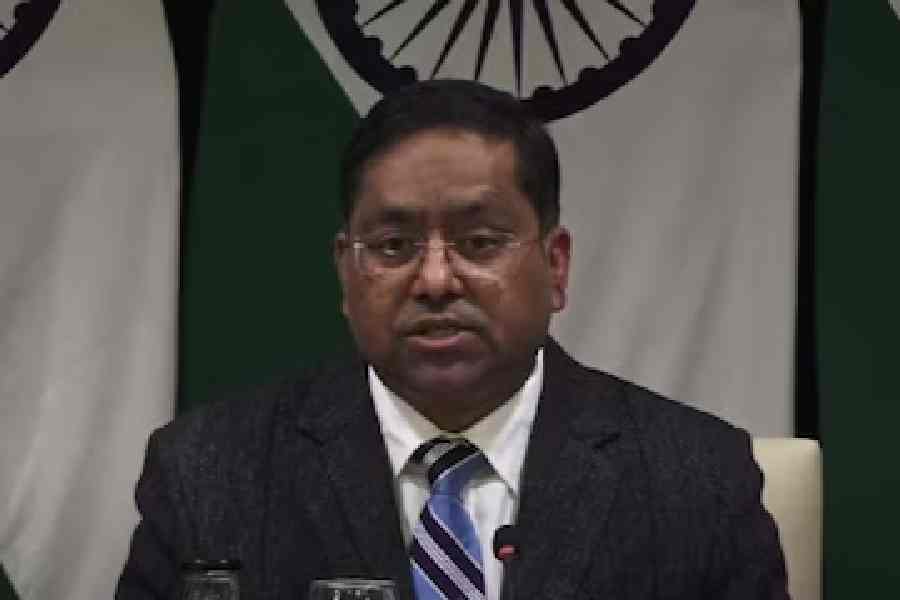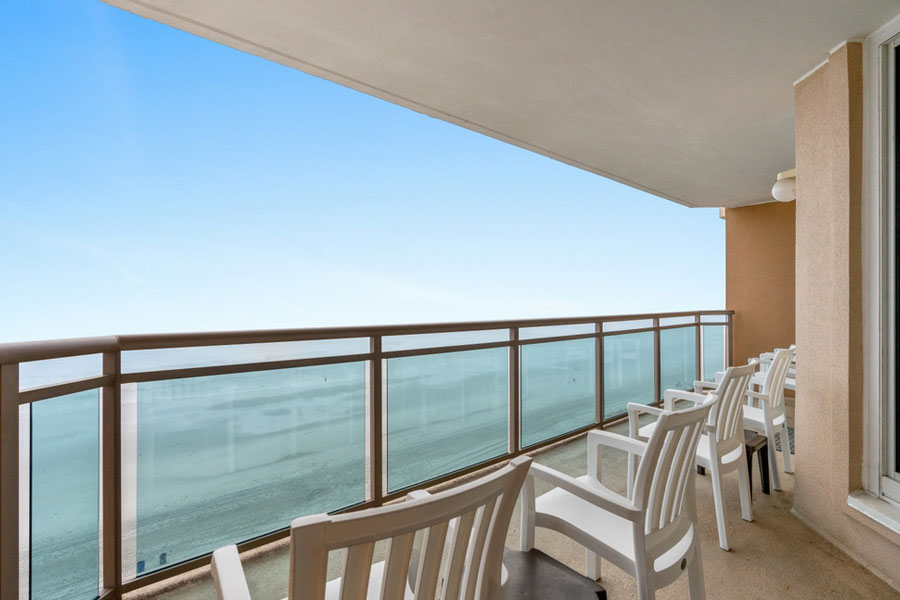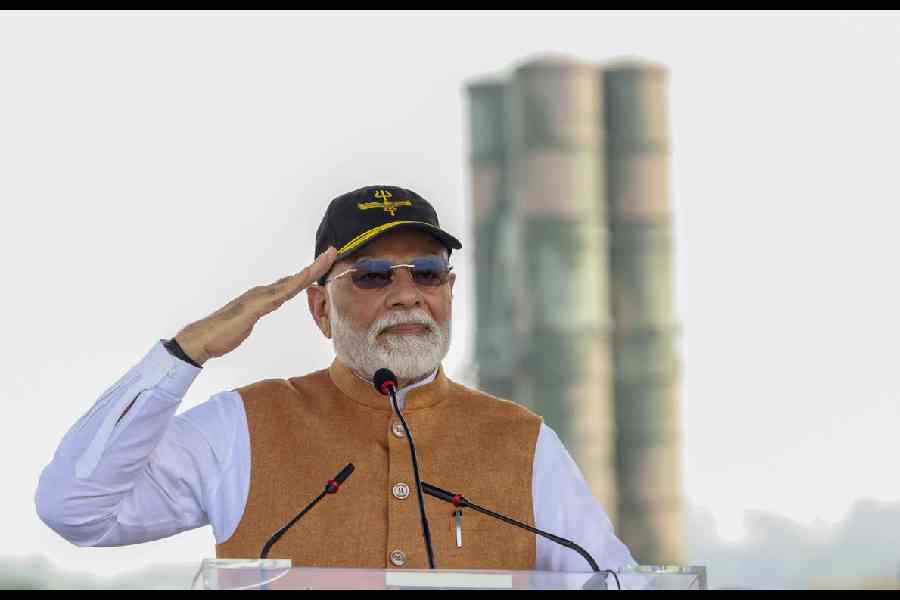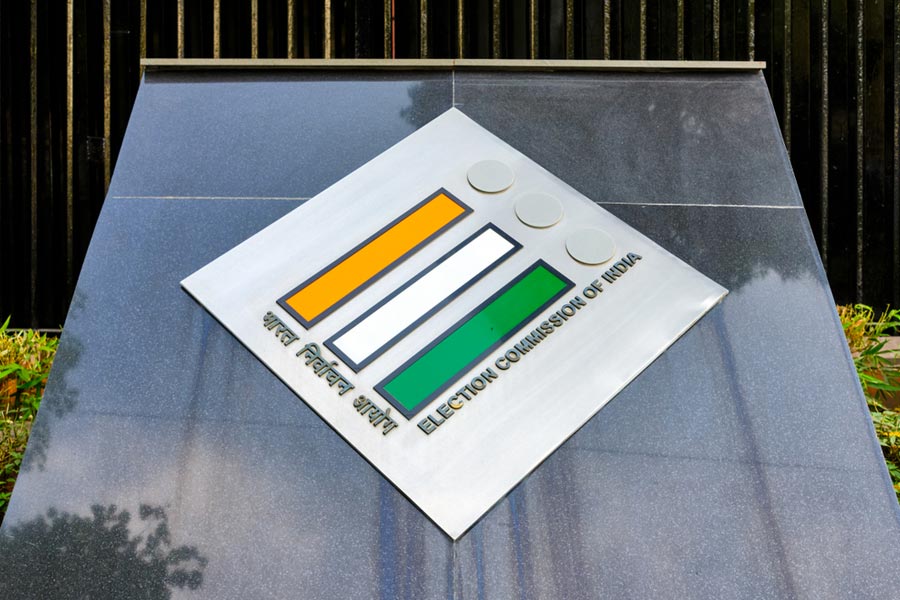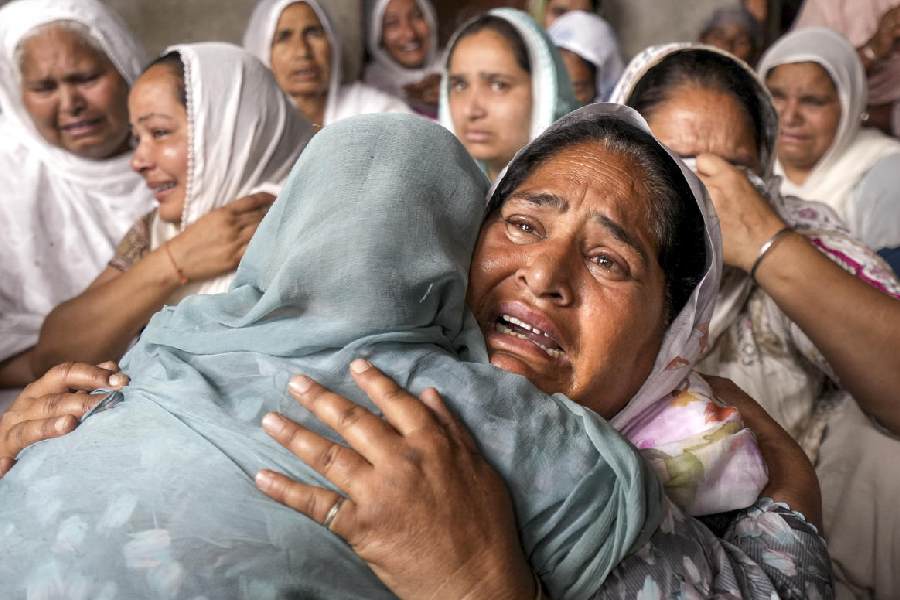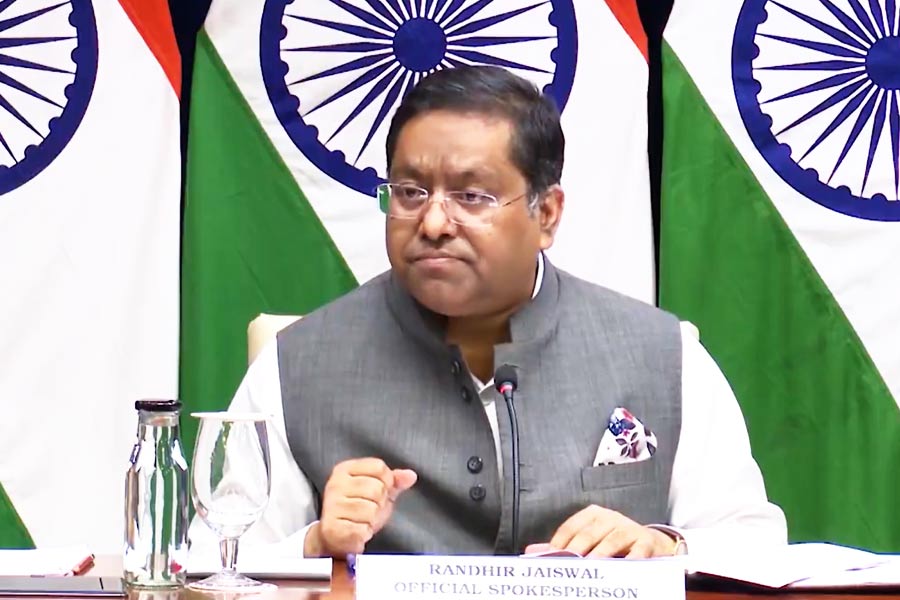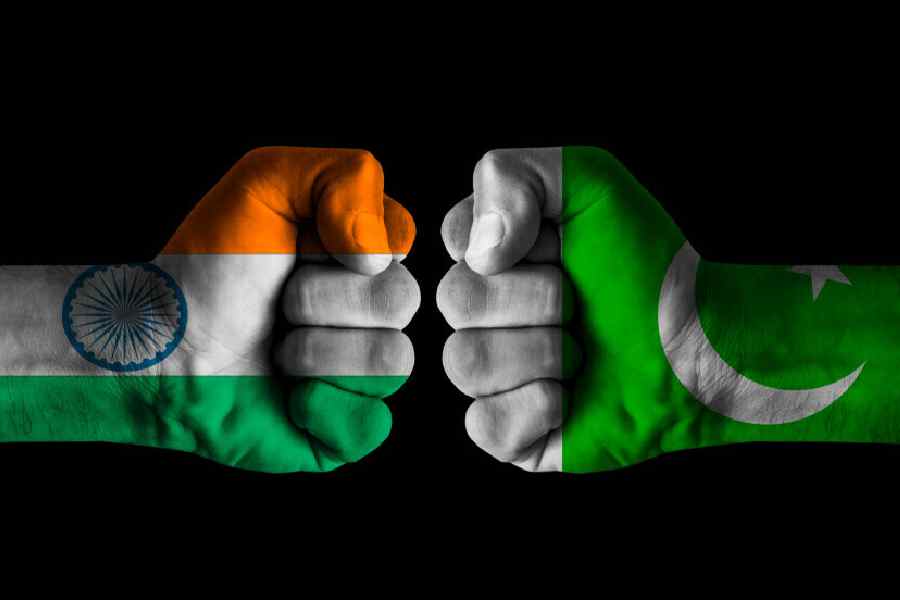 |
| Executive chef Machindra Kasture at work. Picture credit: Rashtrapati Bhavan |
New Delhi, Oct. 8: Narendra Modi didn’t miss out on much at last month’s White House banquet because of his Navratri fast.
But Barack Obama, who lauded his Indian guest’s energy levels despite being on lemon water, has a lot to lose if he follows Modi’s example during any future trip to New Delhi as US President.
One look at what Machindra Kasture is doing will tell you why.
Rashtrapati Bhavan’s executive chef is busy carving a roasted leg of lamb. It comes cleanly off the bone, a crisp brown crust on the outside and pink on the inside.
“We like it well done,” Kasture says with a satisfied sigh.
For the next few minutes, he carefully arranges the meat on a platter, circled by colourful vegetables. He then spoons brown sauce over the back of his hand and tastes it. Frown.
“We need to thin the sauce down,” he tells a cook. Done. “See, now it has a gloss, a shiny look,” Kasture says as he pours the sauce over the slices of meat.
It’s just another day at the First Kitchen, deep down in Rashtrapati Bhavan’s basement, for Kasture and his team of 26. On a banquet day for a VIP guest, though, the atmosphere can be much more tense.
Presidential banquets tend to be much “meatier” in India than in America. Last month, for instance, the three-course dinner Obama hosted for Modi featured just one non-vegetarian dish: crisped halibut with ginger carrot sauce. Not because Modi is a vegetarian, though.
Even the spread for Modi’s predecessor Manmohan Singh, touted as one of the most expensive banquets thrown by the Obamas, had just one dish boasting animal protein: green curry prawns.
On similar occasions, Rashtrapati Bhavan serves well over a dozen courses, four of them non-vegetarian, with “at least one item each of chicken, mutton and fish”, Kasture says.
The soup, always vegetarian, is followed by four hors d’oeuvres, two of them non-vegetarian, and the main course of four vegetarian and two non-vegetarian dishes. This is rounded off with two deserts, one continental and one Indian.
Dry fruits, chocolates and three kinds of juices make up the rest of the two-page menu card. Alcohol is a no-no — it isn’t used even to cook any of the gravies. In the White House, wine is a must.
At state banquets for world leaders, Rashtrapati Bhavan usually keeps the fare Indian. A western menu is served only on request.
“Just a day before the king of Spain was to dine here, we were told he wouldn’t eat Indian food. So we had to plan a continental dinner at a day’s notice,” Kasture said.
Usually, Kasture begins working on a state banquet almost a month ahead. The foreign ministry chips in with details of the guest’s dietary habits and food allergies.
A committee headed by the secretary to the President, a post now held by Omita Paul, clears the fare. After the final nod from the President, the fare is fine-tuned at “tasting sessions”.
“We have to be sure even of the colour of the gravy. For example, a makhani has to be red and Nilgiri korma must be green. We are careful not to repeat any core ingredient,” Kasture said.
Most of the vegetables come from Rashtrapati Bhavan’s own gardens, the grocery from the National Agricultural Cooperative Marketing Federation of India (Nafed) stores, the fish from local suppliers, the meat from a private chain.
A veterinarian checks the quality of the meat and fish; Prevention of Food Adulteration officials carry out an inspection. “I can’t afford a mistake while serving world leaders,” Kasture said.
The 48 hours before a banquet are the tensest. The prepping of the vegetables and meat starts a day in advance. “All the cooking is done the same day, starting 7am,” he said.
It’s tough for the attendants too — everything from soup to dessert must be served within 45 minutes. From kitchen to table is at least a 10-minute walk even for someone well versed at balancing the expensive plates.
In the White House, the menu for state banquets gives details of the years the cutlery and crockery were bought and by which President. In New Delhi, none of the British-era cutlery has survived in its entirety but the huge store of colonial cooking utensils, some of which have heavy copper bases and weigh up to 30-40kg, are still in use.
The basement has three cooking areas: the main kitchen, a bakery and a spot for the halwai who makes Indian sweets.
Few of the cooks have had formal training. Many are second-generation cooks like baker Razi Haider, whose father Haider Ali was a halwai at Rashtrapati Bhavan when Rajendra Prasad occupied it.
“In my father’s days there were no gadgets, no cooking range: everything was done manually,” Razi said.
“I have heard that a lot of pattissa (a sweet made of gram flour), namkeen and jellies were made then. All of it has dropped off the menu.”
Some things haven’t changed, though. Before Obama’s 2010 visit, then President Pratibha Patil had personally supervised a dry run of the banquet service. She sat in the garden where the dinner was to be hosted while each dish was served to her.
“She had given strict instructions that everything should be served piping hot, so we had to make sure the service was fast,” said Kasture, who was deputed to Rashtrapati Bhavan in 2007 by the Indian Tourism Development Corporation.
When there are no banquets, the kitchen prepares three kinds of snacks every day for the 250-odd visitors the mansion receives.


